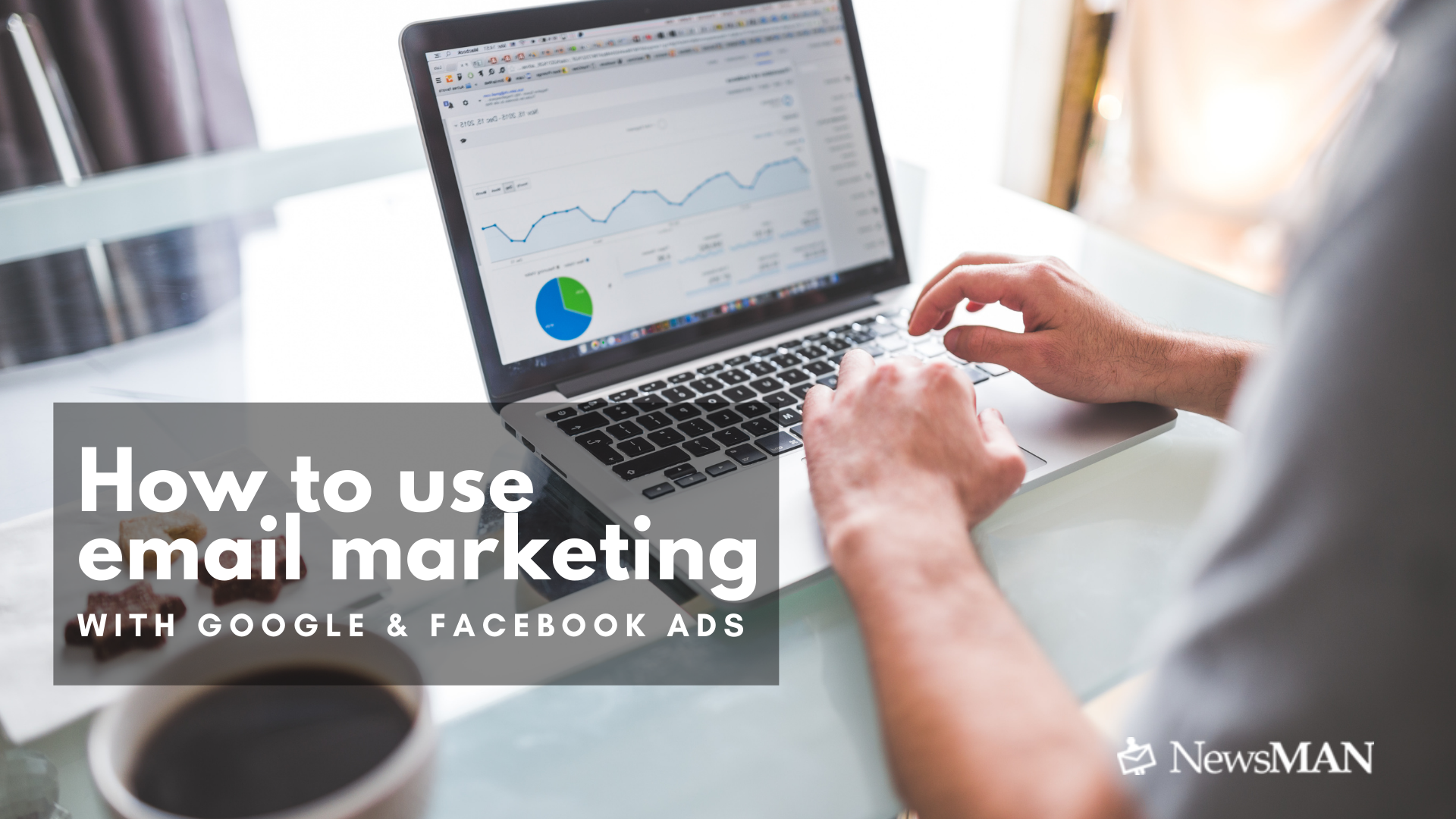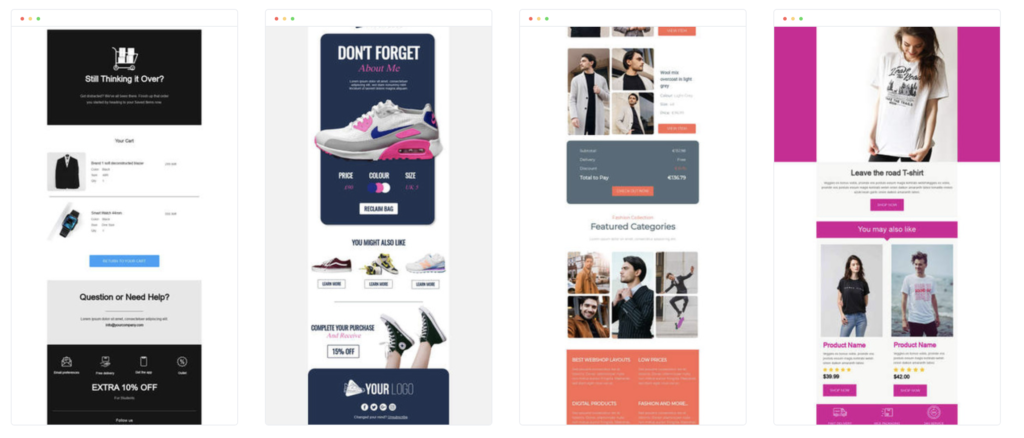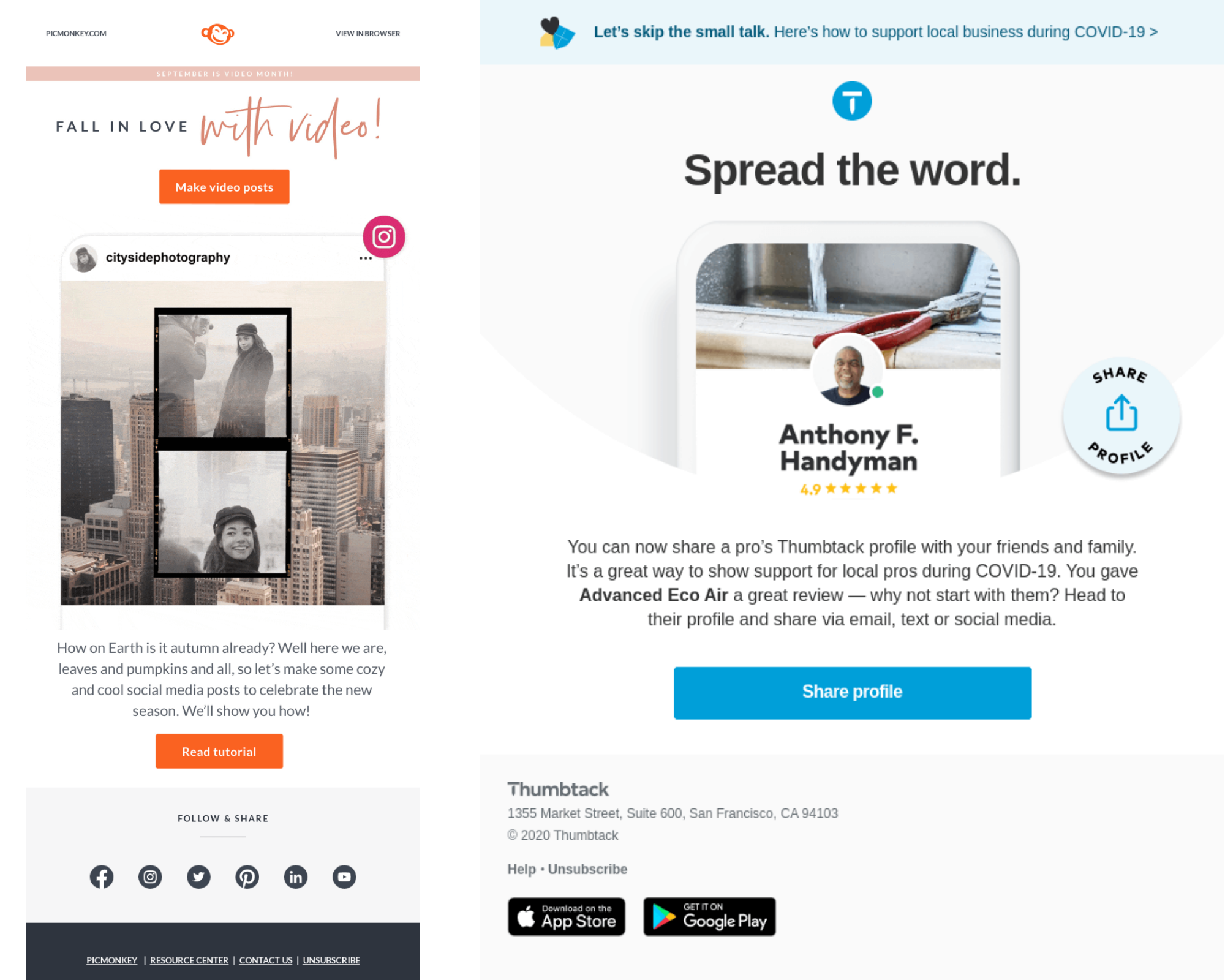Why you need email marketing when advertising on Google and Facebook?

Email marketing campaigns and online ads are both promotional strategies that help you achieve different marketing objectives. But did you know that you can use them together to optimize the sales process?
Email remains one of people’s preferred communication methods, both for B2B and B2C. According to Wordstream, 77% of consumers want to hear from brands and are 3 times more likely to share the information they receive through newsletters than through other channels. 80% of retail companies say that email is the best tool for client retention, followed by social media.
At the same time, 97% of those visiting a website never return. You can run a Google or social media campaign to generate traffic but most of your results will be in vain. The solution to this is to combine email marketing and Google and Facebook ads.
In this article, we explain why you need email marketing when advertising online, how to best use these strategies together and we help you start through a few examples.
Converting website visitors into subscribers
A main objective for Google and Facebook ads is to drive traffic to your website. But website traffic without visitors actually taking an action is not enough. Ideally, you want visitors to buy, but that rarely happens on their first visit for several reasons: they don’t know the brand, they don’t need the product/service at that moment in time, they would rather wait for a discount, they need to do more research etc.
For all website visitors who are not ready to buy, you need to have another conversion point that allows you to communicate with them again. This is where newsletter subscription comes in. Newsletters allow you to keep visitors close, educate them about your products and send offers when the time is right.
When you set up your Google or Facebook ads campaign, make sure your website has an interactive sign up form that transforms visitors into subscribers.
Email marketing and Google Ads
Converting visitors into subscribers is just one strategy you can use, but there are more. Let’s say you send an eCommerce newsletter with discounted products on an important shopping day. Some of the subscribers will open the email and click on the products, but not all will buy right away. Again, instead of letting them go and wasting the chance to make a sale, you can use Google Ads for retargeting.
Retargeting means displaying ads in the Google network to those who have visited your website and interacted with certain products. Surely you have noticed this type of ads in your own browsing experience. You see ads for the products you are interested in because the online shop you visited uses retargeting to convince you to buy.
Websites using retargeting strategies see an increase of up to 700% in traffic and of up to 147% in conversions, according to Truelist. It’s easy to see why: you’re not targeting a broad audience, but a group that is directly interested in your products and who often only needs a reminder to finalize the buying process.
Besides Google Ads retargeting, you can also run abandoned cart remarketing campaigns or send abandoned browsing email sequences. Thus, people who received a newsletter, visited the website and added products to their cart (or not), can automatically get emails with extra incentives to buy, like product benefits, recommendations, an extra discount code etc.
Here are a few cart abandonment automation email templates which you can use when signing up for the email marketing platform NewsMAN. You can quickly customize them to fit your business needs.

Using Google Ads retargeting together with other marketing strategies increases the chance that you will make a sale by 50%.
That means you can double the success of your digital marketing campaign by combining several communication channels, according to Google.
Email marketing and social media ads
The retargeting strategy we described above works well with social media ads as well. Facebook is a favorite promotional channel for advertisers because it offers access to a large and diverse audience and the cost of ads is relatively small compared to other platforms, such as LinkedIn or Twitter.
First of all, aim to transform the website traffic coming from Facebook into a newsletter audience, which you can nurture and retarget with products and offers. Besides this tactic already described above, you can use the subscriber list to build a lookalike audience for your social media ads.
Facebook lets you upload an email list and it will generate an audience based on it, with people with the same demographics and interests. This way, you have access to a wider audience that may be interested in your products. The next step is to create a Facebook ad campaign for this new audience, bring it to your website, convert it to subscribers and start nurturing it. It’s a cycle you can use again and again to grow your audience and make more sales.
Moreover, you can use both newsletters and social media to encourage people to follow you on other platforms. Include social media follow and share buttons in newsletters and create Facebook or Instagram posts encouraging fans to become subscribers. The more places you can reach people with your messages, the more chances to convince them to become repeat customers.
Below are two examples of how brands use newsletters to create social media interaction.

Here are a few more ideas to use social media and email marketing together:
- A newsletter sign up form directly on Facebook;
- A social media group dedicated to your subscriber list;
- Social media contests that include newsletter sign up in the game mechanics;
- Using content generated on social media in newsletters and the other way around.
A well known principle of persuasive communication says that a person needs to see a message 7 times before remembering it. That’s why we see the same ads on TV over and over again. You don’t pay attention at first, then you start noticing them, and, before you know it, you’re singing that catchy ad tune without even realizing it. The good news is that digital marketing lets you be more efficient than that. Instead of paying to reach a large audience, you can use email marketing and social media ads to convince only the ones who are truly interested in your products to “sing along” to your campaign message.
Email marketing, Facebook and Google create a promotional funnel in which each channel supports the other to generate new leads constantly. Keep in mind these things when combining these channels:
- Adjust your message for each platform. While newsletters allow you to send more information, social media posts must be short and concise, and ads even more so. Repeat the main message, but in a relevant and catchy way for each channel.
- Use a professional design and quality images on all communication channels.
- Measure results and adjust campaigns constantly. Digital campaigns are dynamic and you must keep an eye out for algorithm changes as well as user behaviors.
- Choose the right tools. Having access to data about user preferences and behaviors is essential, both on the email marketing platform you use and on social media. They need to be integrated to apply all the strategies described in this article.
Try NewsMAN and enjoy hundreds of newsletter templates, a user-friendly drag & drop email editor, advanced segmentation and personalization features, automation flows and eCommerce tracking, among others. Sign up for free and reap all the benefits of integrating email marketing in your digital campaigns.